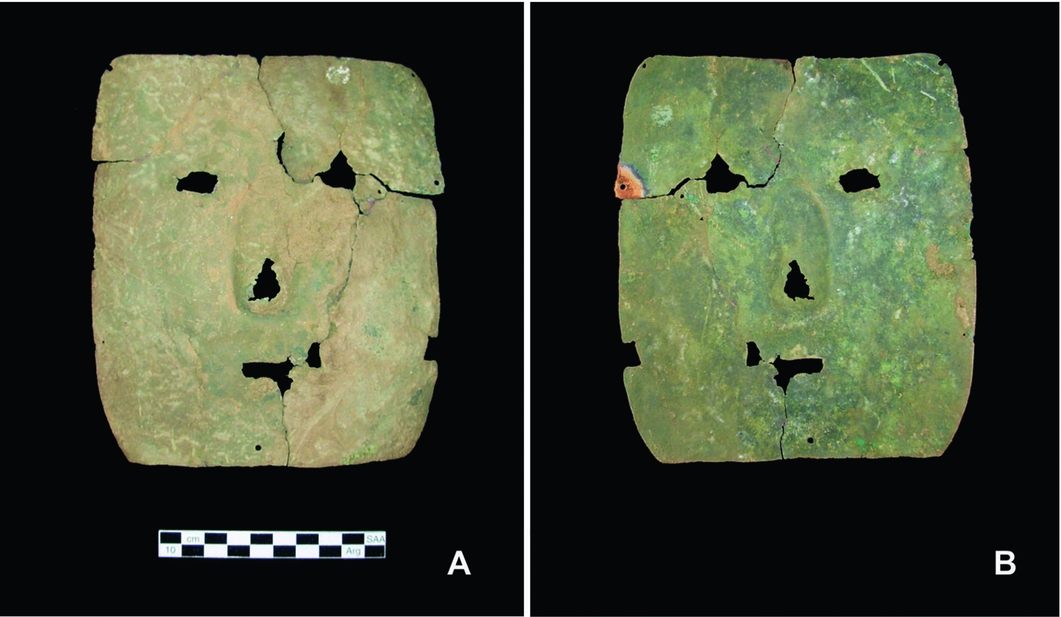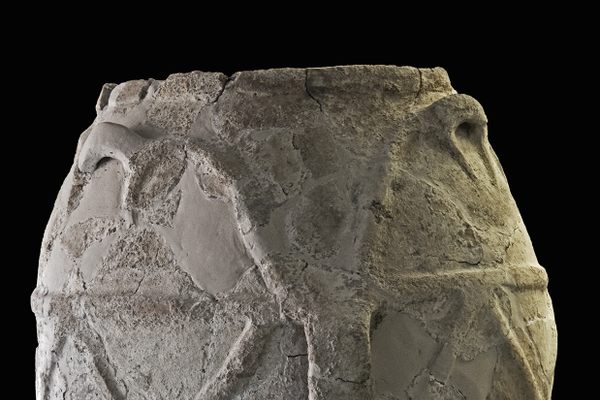Found: The Oldest Human-Made Metal Object Ever Discovered in South America
The mask appeared after a heavy rainstorm in the Andes.

About 3,000 years ago, a group of people in the Andes, in what’s now northwestern Argentina, created an object unlike any other archaeologists have found in South America, LiveScience reports. This sheet of metal, 7 inches long by 6 inches wide, was given the features of a person—eyes, nose, and mouth holes. Along the edges, the people who made this object made small, circular holes—at the corners of the sheet and its middle, bottom, and top. As far as anyone in our own time can tell, it was meant to be a mask.
This discovery, reported in a new paper in the journal Antiquity, is one of the oldest examples of metalwork in South America and the oldest manmade metal object on the continent. There are older examples of metalwork, but “none of the artifacts had been intentionally shaped into a recognizable form, nor were any perforated or shaped into three-dimensional objects,” the paper’s authors report. This mask is unique.
It was first discovered by locals back in 2005, when a rainstorm washed it from the ground. In the place where the mask was found, archaeologists uncovered the remains of 14 individuals. One of the skeletons showed green stains, which indicated that the mask had been buried there, too.
At the time the mask was created, about 3,000 years ago, people in this part of the world were trading hunting and gathering for a more sedentary, agricultural existence. It was previously thought that the practice of metalworking in this part of the world originated in what’s now Peru, but as the authors write, this new discovery indicates that there may be more than one origin point for this craft in South America.



















Follow us on Twitter to get the latest on the world's hidden wonders.
Like us on Facebook to get the latest on the world's hidden wonders.
Follow us on Twitter Like us on Facebook